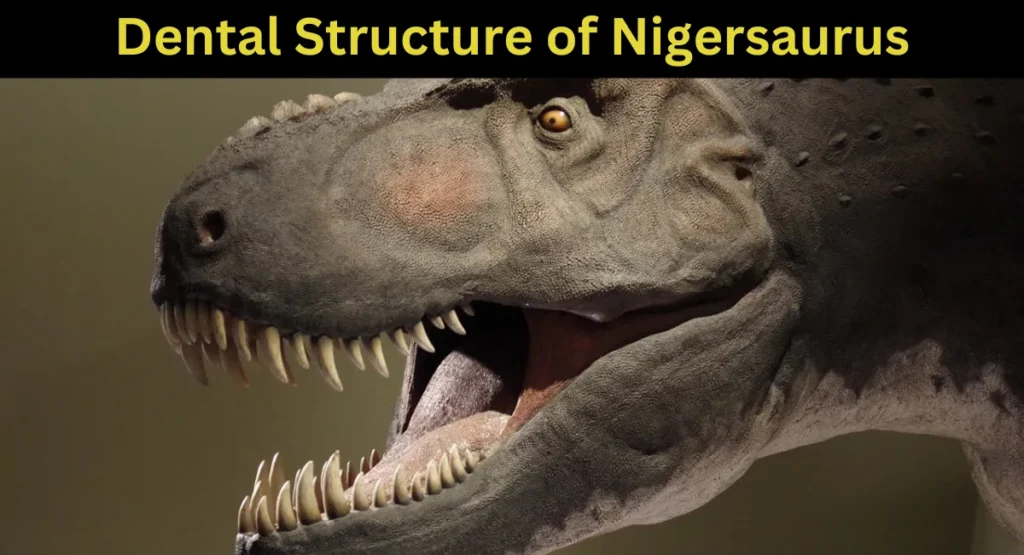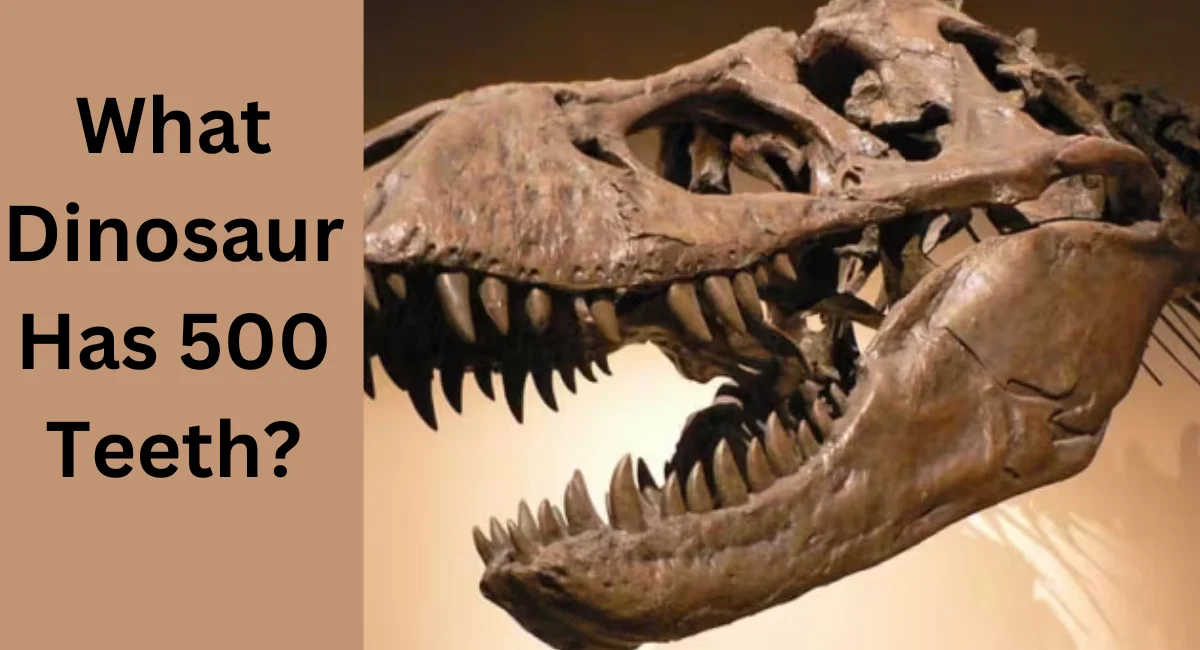Dinosaur have always fascinated us with their enormous sizes, unique shapes, and mysterious past. Among the many questions that arise when discussing these ancient creatures is, “What dinosaur has 500 teeth?” This question, which at first glance might seem trivial, leads us on a fascinating journey into the life and times of one of the most unusual dinosaurs that ever roamed the Earth. Let us delve deep into the mystery and uncover the truth about this extraordinary creature.
The Nigersaurus: The Dinosaur with 500 Teeth
The answer to the question “What dinosaur has 500 teeth?” is the Nigersaurus. This remarkable dinosaur lived during the middle of the Cretaceous period, approximately 110 million years ago, in what is now known as Niger, Africa. It was first discovered in the late 20th century by French paleontologists who were conducting extensive research in the Sahara Desert.
Nigersaurus belonged to the rebbachisauridae family, which is part of the larger group known as sauropods. Sauropods are well-known for their long necks, massive bodies, and herbivorous diets. However, Nigersaurus stood out from the crowd due to its unique dental structure, which made it one of the most specialized herbivores of its time.
The Unusual Dental Structure of Nigersaurus

What truly sets the Nigersaurus apart from other dinosaurs is its remarkable dental structure. With a jaw that housed around 500 teeth, the Nigersaurus possessed one of the most complex and unusual dental arrangements among dinosaurs.
The Nigersaurus had a broad, flattened snout that was lined with multiple rows of small, needle-shaped teeth. These teeth were arranged in a way that allowed the dinosaur to continuously replace worn-out teeth throughout its life, ensuring that it always had a fresh set ready for use. The teeth were organized in what is known as a “dental battery,” a formation where numerous teeth are tightly packed together to form a highly efficient grinding surface.
This dental battery was especially well-suited for the dinosaur’s diet. Nigersaurus was a herbivore, feeding primarily on low-lying plants, such as ferns, horsetails, and other soft vegetation. The arrangement of its teeth allowed it to graze efficiently, much like a modern-day cow, cropping vegetation close to the ground with remarkable precision.
The Evolutionary Significance of Nigersaurus’ Teeth
The unique dental structure of Nigersaurus provides significant insights into the evolutionary adaptations of herbivorous dinosaurs. The dental battery is a prime example of how evolution can lead to the development of specialized features that enhance an organism’s ability to survive in its environment.
For Nigersaurus, the ability to constantly replace its teeth was a crucial adaptation. The soft, fibrous plants that it consumed would have quickly worn down ordinary teeth, but the Nigersaurus’ specialized dental battery ensured that it could continue feeding without interruption. This feature likely gave it a significant advantage in its ecosystem, allowing it to thrive in a world dominated by larger and more powerful herbivores.
Also Read : Homeworkify | Meet @7_jgray | Netwyman Blogs
Discovering the Nigersaurus: A Landmark in Paleontology
The discovery of Nigersaurus was a landmark moment in paleontology, shedding light on a previously unknown and highly specialized group of dinosaurs. The first fossil remains of Nigersaurus were unearthed in the Elrhaz Formation of the Sahara Desert, a region that has proven to be a treasure trove of dinosaur fossils.
The initial discovery consisted of fragmented bones, but further excavations revealed more complete skeletons, allowing paleontologists to reconstruct the dinosaur’s appearance and understand its unique features. The most striking find was the skull of Nigersaurus, which provided the first clear evidence of its unusual dental structure.
Subsequent studies of the fossils have revealed much about the biology and behavior of Nigersaurus. For example, analysis of its bones suggests that it had a relatively short neck for a sauropod, which would have limited its feeding range to low-lying plants. This finding, combined with the evidence of its dental battery, has led scientists to conclude that Nigersaurus was a highly specialized grazer, adapted to a specific ecological niche.
The Significance of the Nigersaurus in Understanding Dinosaur Diversity
The discovery and study of Nigersaurus have greatly expanded our understanding of dinosaur diversity during the Cretaceous period. While many people associate dinosaurs with the towering giants like Tyrannosaurus rex or Brachiosaurus, Nigersaurus represents a different aspect of dinosaur life – one that highlights the incredible adaptability and specialization of these ancient creatures.
Nigersaurus’ unique features, particularly its dental battery, underscore the fact that dinosaurs were not a monolithic group but rather a highly diverse collection of species, each adapted to its specific environment. The study of Nigersaurus has also provided valuable insights into the broader ecological dynamics of the Cretaceous period, helping scientists to piece together the complex interactions between different species and their environments.
Also Read : CUIMS Login Portal | Worldwidesciencestories | cover letter
Conclusion: The Legacy of the Nigersaurus
The Nigersaurus, with its 500 teeth and specialized feeding habits, remains one of the most fascinating and enigmatic dinosaurs ever discovered. Its unique adaptations offer a glimpse into the incredible diversity of life that existed millions of years ago, and its discovery continues to influence our understanding of dinosaur evolution.
As we continue to uncover more fossils and learn about the prehistoric world, the Nigersaurus serves as a reminder of the remarkable adaptability of life on Earth. Its story is a testament to the power of evolution and the endless variety of forms that it can produce.
